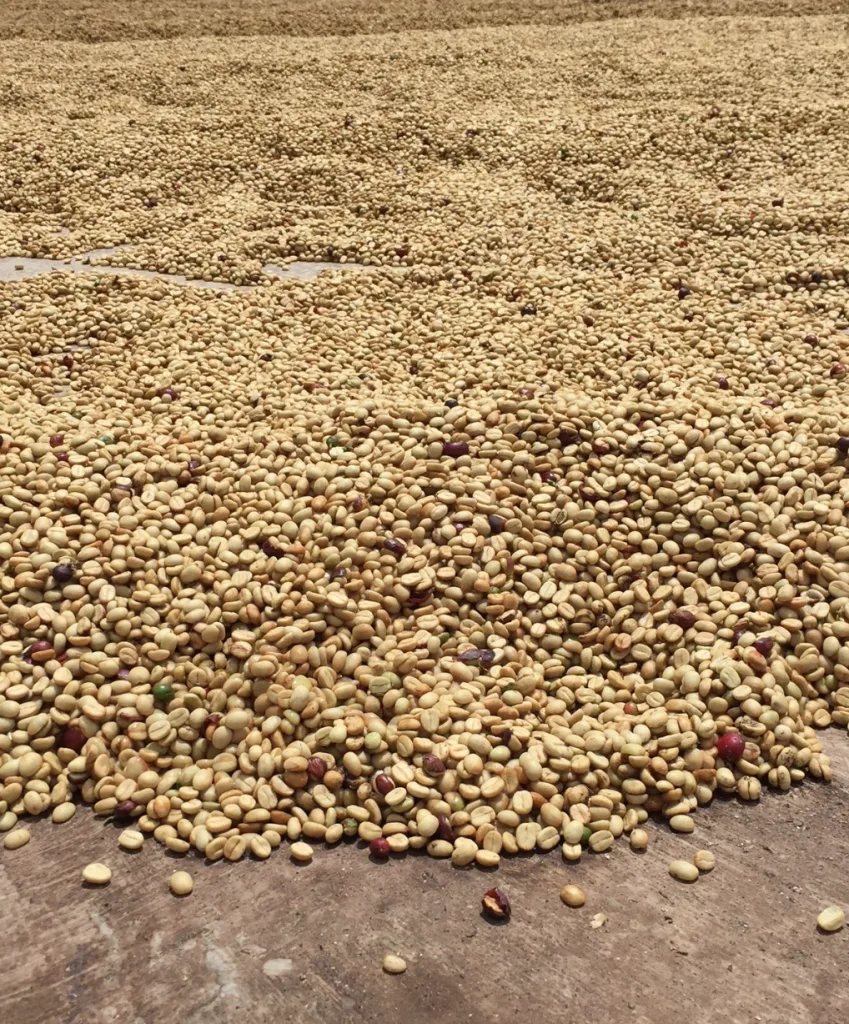If you’ve signed up for our mailing list, you would have received a bit of a run down on honey processing for the release of our small-batch White and Red Honey from Costa Rica, the H1 Centroamericano experimental hybrid from V&G San Juanillo. So, some of this may be familiar, but now we’re going to open up the full process.
All coffee is processed, and all coffee cherries will have the seed separated from the fruit as some point in a process before being roasted. Processing is all about removing the pulp around the coffee cherry and during the seed creating something stable and homogenized before being packaged and shipped as green beans. The three main processes (while there are many others) are washed, (dry) natural, and honey.
Natural is the oldest of methods, washed being the most common, and our main focus today being honey, which emerged in Costa Rica around 15 years ago, making it still a fairly new process.
Why Is It Called Honey?
Pulp is removed from fresh coffee cherries and the beans are left to dry without washing with a shiny outer layer called mucilage.
Gold, sweet, and sticky, mucilage was compared to honey thus giving the process its name. The coffee itself does tend to taste sweeter and fruity and combines the best of both natural and washed process to showcase some unique flavour! A benefit to the honey process is the cut back on water usage using a semi-washed method to rinse the fruit rather than fully washing to remove the fruit.

Process of Fermentation
As the coffee dries (usually on a flat bed in the sun), the mucilage begins to oxidize and darken. Starting with a whiteish gold to yellow, the seeds can continue to ferment and transition to red and then black. Time, how much fruit is left on the seed, and rake frequency will effect the intensity of the colour and the impact of the fruit flavour. Similar to roasting, there are variables that come to effect your white, red, or black like lighter to medium, and darker roasted coffee.
White, Red, Black
One difference between the three categories of honey processes is the amount of mucilage left on during the drying process along with the length of drying and the amount of light exposure play some key parts in the process as well.
White is typically found to taste unique and complex. Mechanically washed and with a very small about of mucilage left around the bean itself.
Red leaves about half of the fruit on the seed as it dries. It’s then rinsed and carries more syrup-like flavour.
Black is wildly complex and labour intensive, making it much more of a rarity. With an extended drying time and limited exposure to light, this honey process results in enhanced balance and natural sweetness.
Early Interest and Future Change
Being that the Honey process is still considered the new kid on the block of processes, there’s still so much to unlock about the process and experiment with which is pretty exciting seeing as it’s so advanced in bringing such unique flavours. Exciting stuff!
Have you tried the Red or White Honey? Tell us what you think! Or find it here.
Connect
Instagram: @devils_head_coffee
Facebook: @Devil’s Head Coffee
Email: [email protected]
